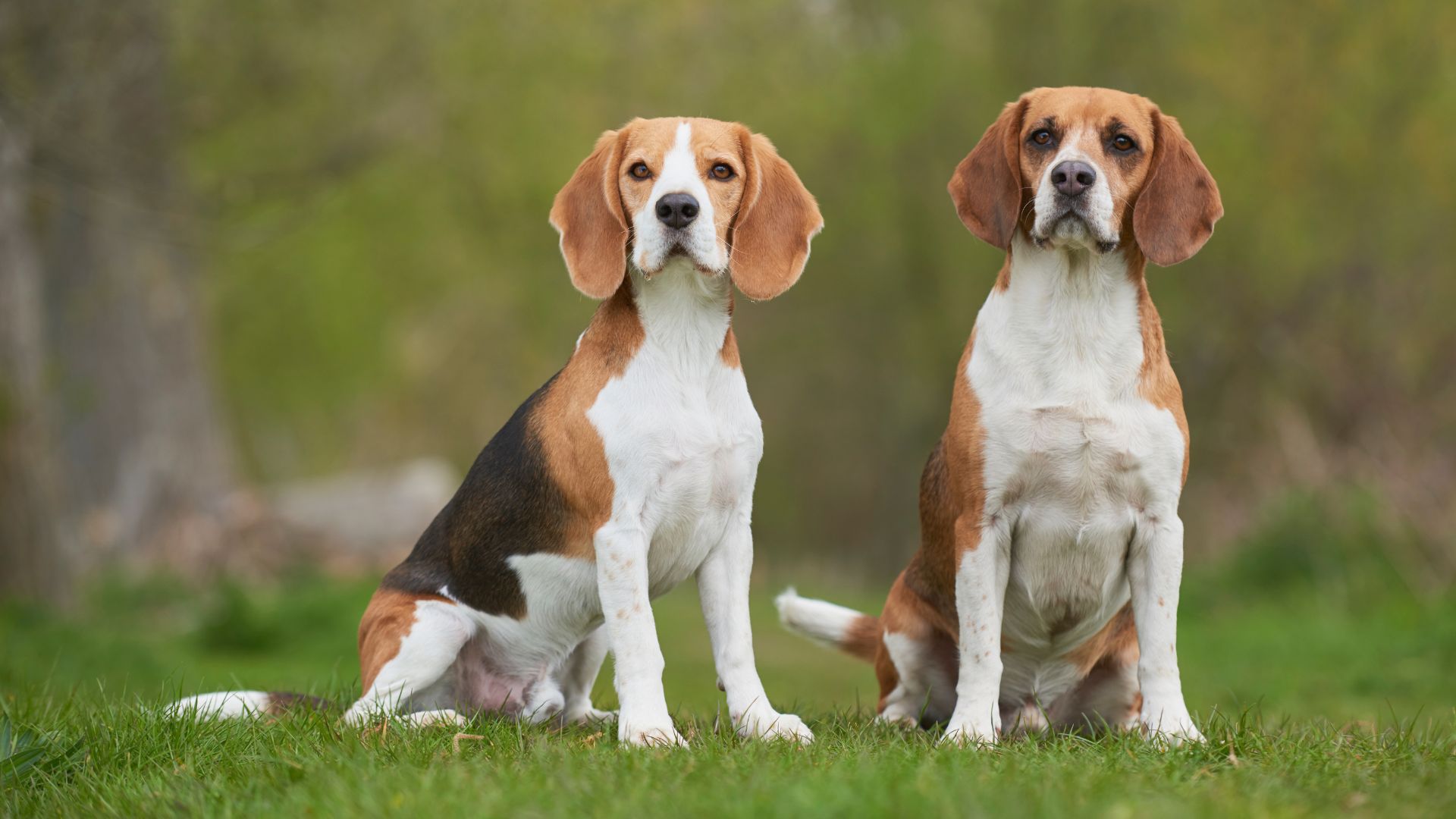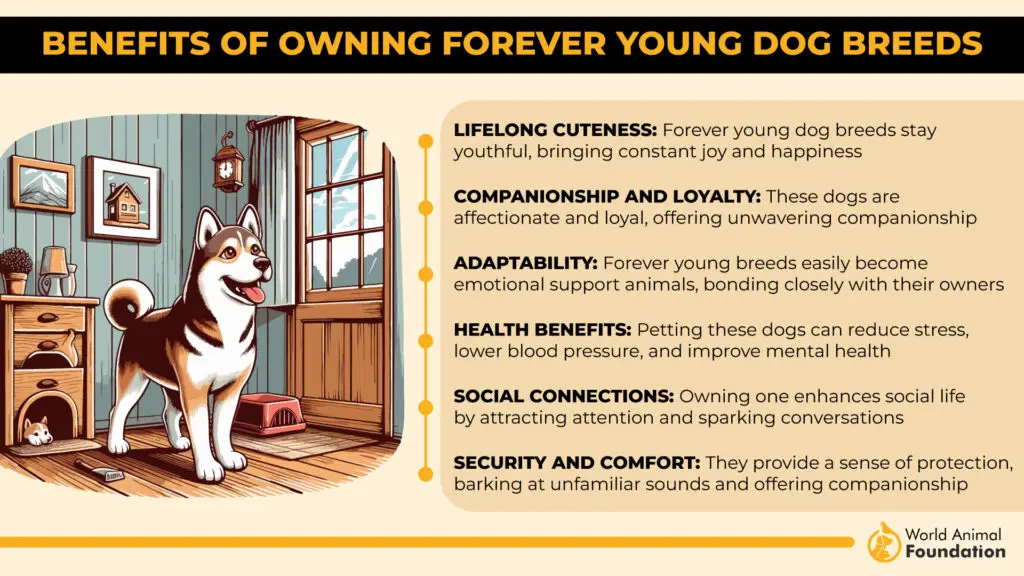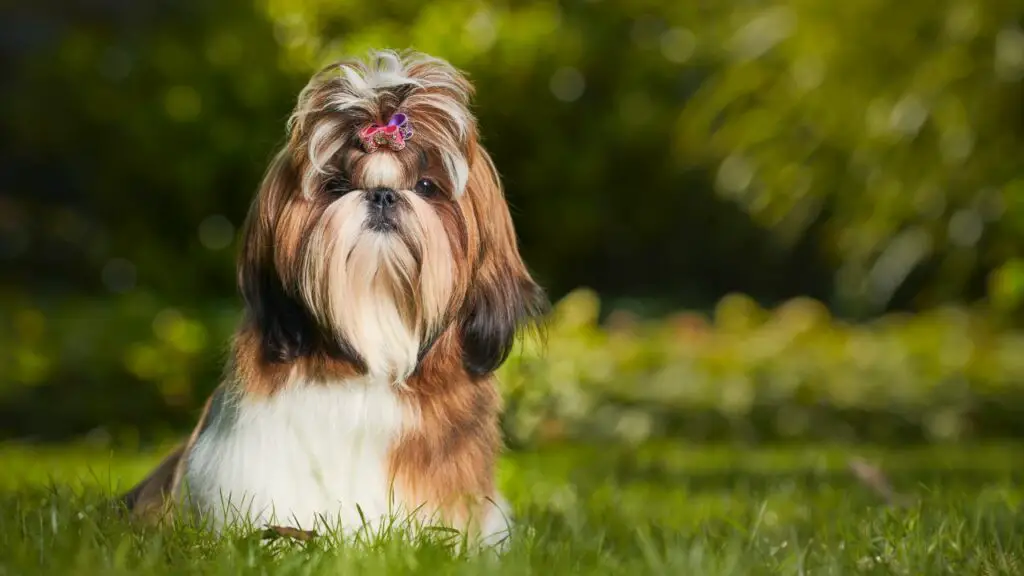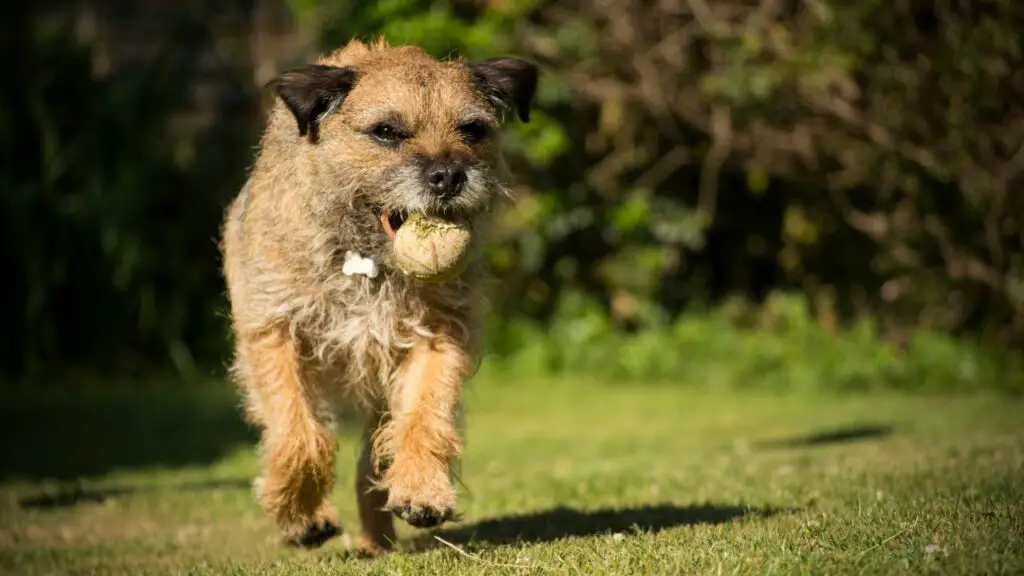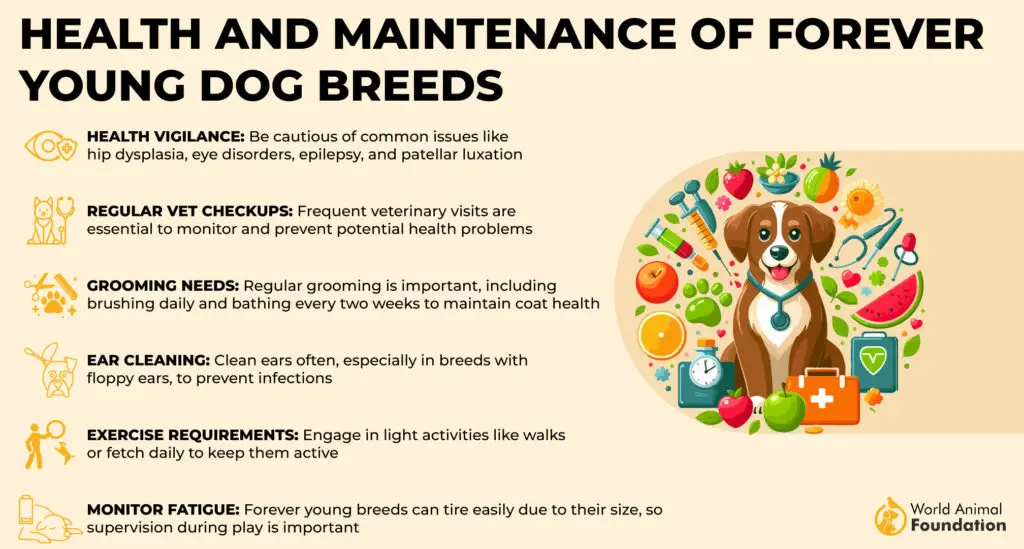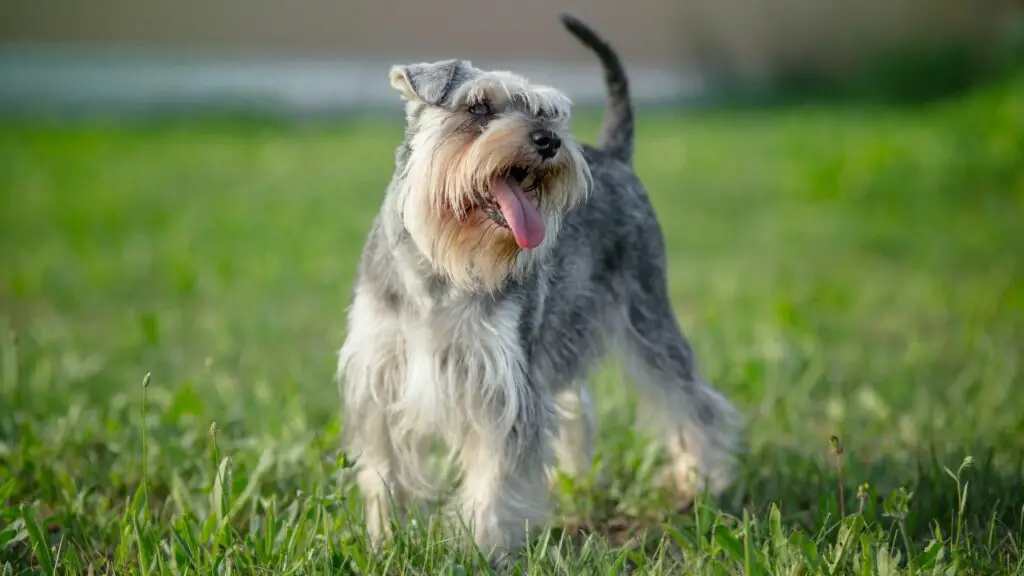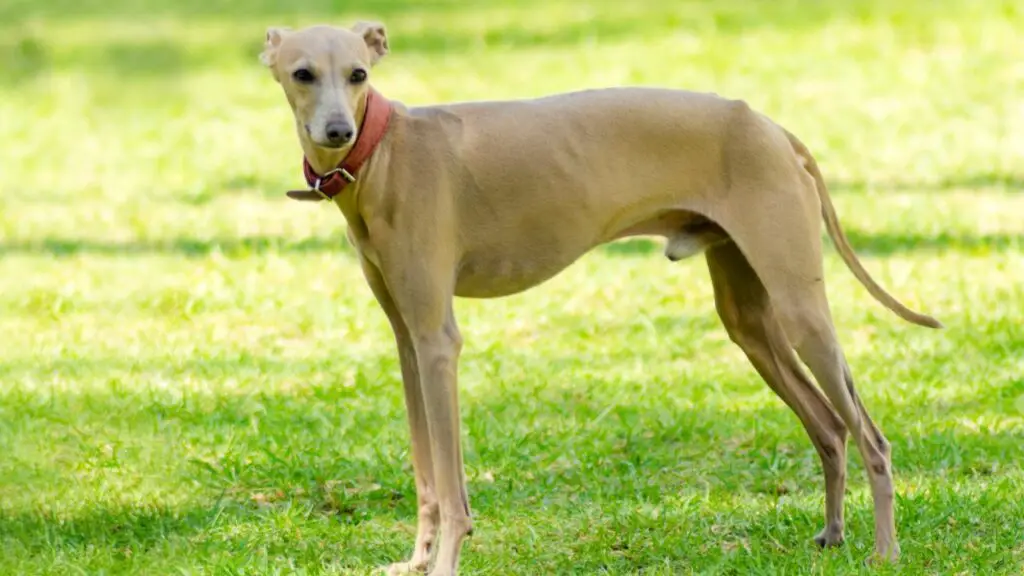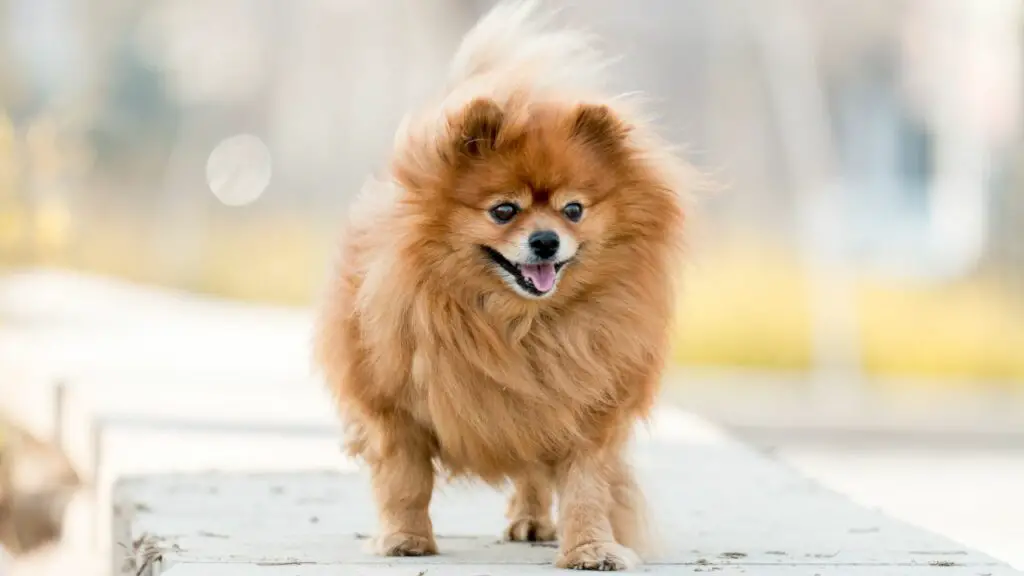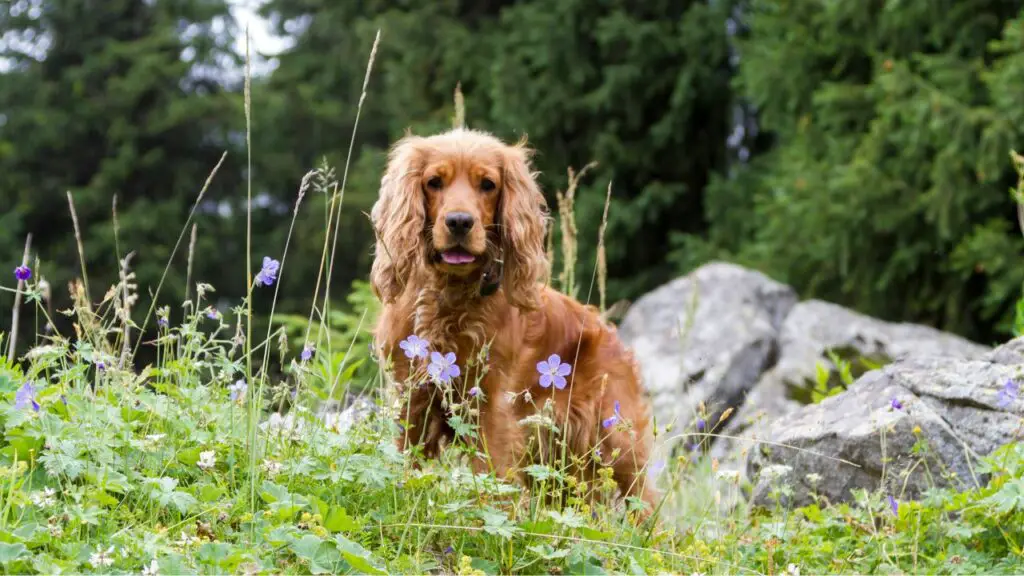We all wish our canine companions could stay puppies forever. While true immortality remains elusive, some breeds retain their youthful exuberance and playful energy well into their senior years. From spritely small breeds to eternally optimistic larger dogs, these “forever young” breeds boast a zest for life that defies their age. Discover nine breeds known for their playful personalities, boundless energy, and youthful charm, guaranteed to bring joy and laughter to your home for years to come. Which breed’s puppy-like spirit will capture your heart?
Sometimes, we find ourselves wishing our big dogs could stay puppies forever, with their irresistible cuteness and playful energy. Luckily, there are dog breeds that naturally retain that youthful spirit throughout their lives, and they truly are some of the most delightful companions!
Choosing a dog that stays forever young means endless joy, laughter, and playful moments in your home. These 9 breeds are perfect for those who cherish the boundless energy and excitement of a puppy and want to enjoy it for as long as possible.
Whether you’re looking for a cuddly lap dog or a spirited terrier, there’s a forever-young breed that’s just right for you. From the lively Spaniel to the charming Papillon, these dogs will keep you smiling and bring joy to your life every day.
Forever Young Dog Breeds
1. Jack Russell Terrier
Jack Russell Terriers were originally bred as hunting dogs, making them incredibly energetic and active. Known for their boundless energy, these dogs are always on the go, curious, and athletic. They require at least an hour of exercise daily, along with plenty of playtime and mental challenges to keep them happy.
This breed isn’t suited for a sedentary lifestyle; instead, they’re perfect for active families who love outdoor activities like hiking, biking, and long walks.
To keep a Jack Russell’s mind sharp, it’s important to find games they enjoy and offer puzzle toys to keep them occupied, especially when you’re not around. According to PetPlan, without enough exercise and stimulation, they can become rowdy and vocal, so keeping them engaged is key to a well-behaved and happy dog.
2. Beagle
Beagles are energetic dogs that thrive on plenty of exercise and mental stimulation. Originally bred for long hunting trips, they have a natural endurance and love to run and play, especially outdoors. Beagles are happiest in environments where they can explore, sniff, and engage in activities that challenge their keen sense of smell.
To keep a Beagle content, they need at least an hour of daily exercise, whether it’s through walks, runs, or hikes. A fenced yard can provide them with the space to run freely, but it’s important to keep an eye on them as their strong hunting instincts might lead them to follow a scent.
Beagles can become destructive if they don’t get enough activity or are left alone for too long. Boredom and pent-up energy can lead to trouble, so keeping them engaged is crucial. Early training and socialization are key to helping Beagle puppies grow into well-mannered and confident adults.
3. Shih Tzu
Shih Tzus have a moderate energy level and need regular exercise to stay healthy. Their activity needs are relative to their size, with larger dogs generally requiring more exercise than smaller ones. Shih Tzu puppies can be quite energetic, and a mix of short walks and playtime can help them burn off that excess energy.
As they grow into adults, most Shih Tzus become much calmer but stay young at heart, and a brief walk around the park combined with some indoor play is usually enough to keep them content.
As natural lapdogs, Shih Tzus were bred to be close companions, so they don’t need a lot of exercise. Before leaving your Shih Tzu home alone, it’s a good idea to give them a fun play session or a walk to help tire them out. Providing a special treat or puzzle toy can also keep them entertained while you’re away.
4. Papillon
Papillons are high-energy dogs that are smart, active, and eager to please. They require more exercise than the average companion breed, needing daily physical and mental stimulation. Regular walks and playtime, including indoor games like fetching a small ball, are essential to keep them happy and healthy.
Papillons are also excellent watchdogs, always alerting their owners to any changes in their surroundings. However, their quickness means they might bolt through open doors, so it’s important to ensure they wear a collar with your contact information at all times.
According to WebMD, Papillons thrive on companionship and don’t do well when left alone for long periods. To help them cope with your absence, you can tire them out with a walk or play session before leaving and provide a special treat or puzzle toy to keep them entertained. Gradually increasing the time they spend alone can also help them adjust better.
5. Border Terrier
Border Terriers are lively and energetic dogs that need plenty of exercise to stay happy and healthy. ASPCA notes that they thrive on both physical and mental challenges, making daily activities like long walks or hikes essential. A brisk 30-minute walk or a fun play session with a ball or flying disc is a great way to keep them engaged and content.
However, if left alone for too long without enough exercise, Border Terriers may develop barking habits or start digging, so it’s important to keep them entertained and on a leash in areas where they might wander off.
Originally from England and Scotland, Border Terriers are small dogs with a distinctive double coat—a wiry outer layer and a soft undercoat. While they are generally healthy, they can be prone to certain conditions like hip dysplasia, patellar luxation, and eye problems, so regular vet check-ups are important to maintain their well-being.
6. Miniature Schnauzer
Miniature Schnauzers are full of energy, despite being the smallest of the three Schnauzer breeds. AKC states that they are bright, alert, and lively dogs with a medium energy level, requiring regular exercise to keep both their minds and bodies in top shape.
For Miniature Schnauzer puppies under six months old, it’s important to keep play sessions short and frequent. A good rule of thumb is to provide about five to ten minutes of exercise per month of age, spread throughout the day.
As they grow older, you can gradually increase the duration and intensity of their exercise, but be mindful of not overstraining their developing joints and bones. It’s always a good idea to consult your vet for specific exercise recommendations tailored to your puppy’s age and health.
7. Italian Greyhound
Italian Greyhounds are energetic dogs that need a good amount of exercise to stay happy and healthy. Agile and athletic, they love to run and play in parks or yards. They typically require about 45 minutes to an hour of physical activity each day, which can include walks, playtime, or time spent exercising in a safe, confined area. They may also enjoy participating in disc events, where they can showcase their impressive jumping skills.
These inquisitive and sensitive dogs have a unique rhythm, often alternating between bursts of energy and relaxing naps throughout the day. While they can make good watchdogs due to their alert nature, their small size and sensitivity mean they’re not suited to being intimidating guard dogs.
Italian Greyhounds can get along well with children who know how to interact gently with dogs, but they may not be the best fit for households with more rambunctious kids.
8. Pomeranian
Pomeranians may be small, but they are bursting with energy. This perky and lively breed loves to play and thrives on attention. To keep them happy and healthy, Pomeranians need regular exercise and playtime to burn off their energy and avoid boredom.
This can include short walks, games of fetch indoors, or interactive activities that get them running and jumping.
Pomeranians are also strong-willed and love being the center of attention. Socialization and puppy training classes can be very beneficial for them, helping them learn basic commands and how to interact well with others. With the right care and attention, Pomeranians make delightful, forever young companions.
9. Cocker Spaniel
Cocker Spaniels are energetic dogs that need plenty of exercise and mental stimulation to stay happy and well-behaved. Known for their intelligence, playfulness, and people-oriented nature, they often retain their puppy-like enthusiasm well into adulthood.
Without enough exercise, they can become bored and may express their frustration through barking or other unwanted behaviors. To keep your Cocker Spaniel content, make sure they get daily exercise, like walks, hikes, or playing ball in the yard.
You can also add variety by taking them on one or two longer walks each week, allowing them to explore and satisfy their natural curiosity. In addition to physical activity, Cocker Spaniels benefit from plenty of mental stimulation at home, such as engaging games and puzzles that challenge their sharp minds.
Conclusion
In conclusion, if you’re looking for a dog breed that brings endless joy and energy into your home, these forever young breeds are perfect companions. From the sweet and affectionate Cavalier King Charles Spaniel to the lively and playful Bichon Frise, these little dogs never lose their youthful spirit. The Miniature Poodle, with its intelligence and playful nature, is another excellent choice for those who want a companion dog that stays active and engaged.
These breeds, along with other dogs that share a similar zest for life, make wonderful additions to any household. Their playful nature and boundless energy ensure that they’ll be your cheerful companion for years to come. Whether you prefer the charm of a Cavalier King Charles Spaniel or the spirited personality of a Bichon Frise, there’s a forever young dog breed out there that’s perfect for you.
While no dog can truly stay a puppy forever, certain breeds retain their playful, energetic personalities and youthful appearances well into their senior years. From the spirited Jack Russell Terrier to the adaptable Beagle, these “forever young” breeds offer a vibrant companionship that can brighten any home. While their individual needs vary, consistent exercise, mental stimulation, and proper nutrition are crucial to maintaining their youthful zest. Ultimately, the best “forever young” breed depends on the owner’s lifestyle and ability to meet the dog’s specific requirements. Regardless of breed, a loving and supportive environment is key to a long, happy, and youthful life for any canine companion.

